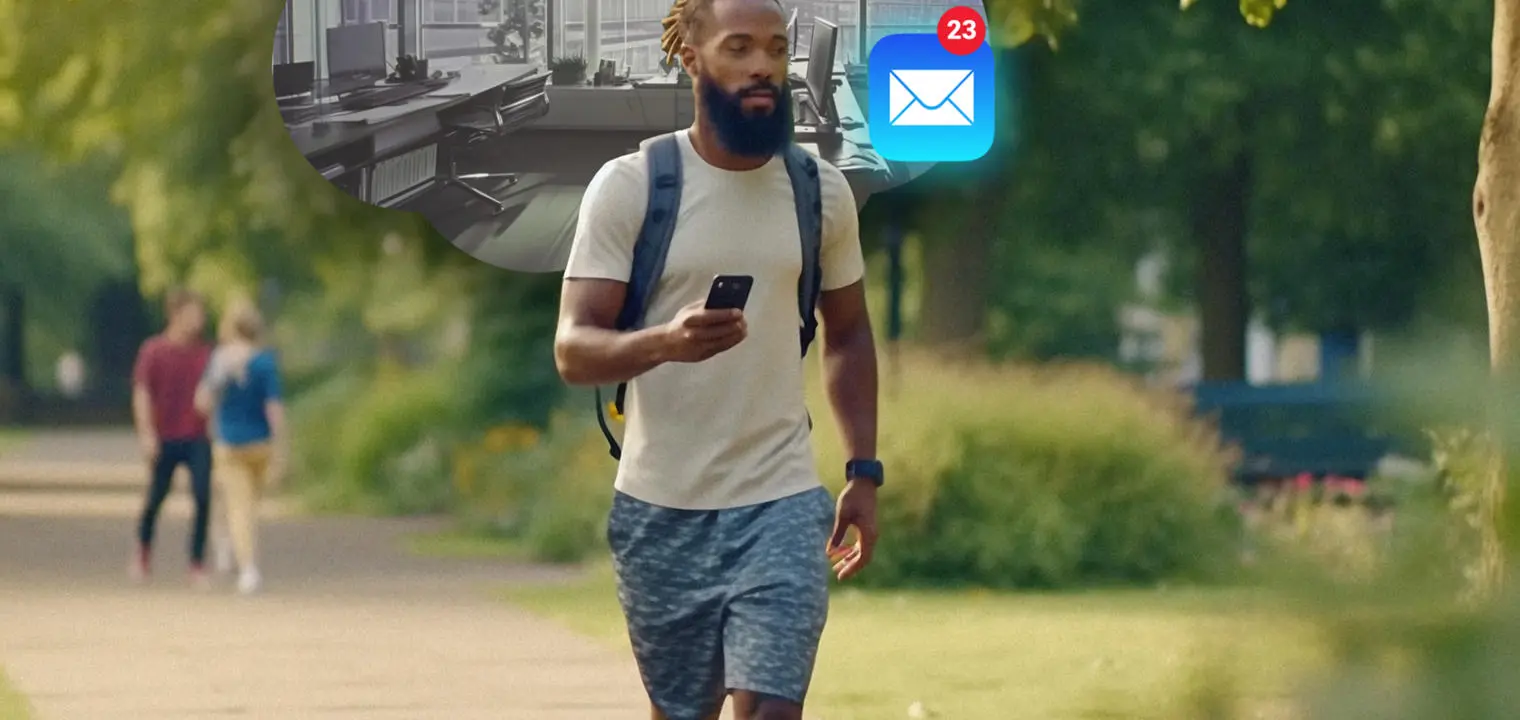Beyond the office walls: how to escape the tyranny of out-of-hour emails and thrive in a digital workplace

Contents
Advancements in technology and the growth of a knowledge-based economy are seen by some to be putting the elusive work-life balance within reach for many workers. For organisational leaders, developments such as flexible and remote working promise ever more agile and productive employees.
Research suggests, however, that these new ways of working are taking a toll on our wellbeing and productivity, as the boundaries between our professional and personal lives become increasingly blurred.
Modern technology … has led workplaces to interpret response speed as a proxy for hard work, signalling to employees that the only way to succeed is to be ‘always on’.
Dr Laura Giurge, Assistant Professor in the Department of Psychological and Behavioural Science at LSE, attributes this to a lack of clear standards and expectations around emerging practices.
"Growing empirical research shows that switching off from work boosts productivity and protects employees from burnout," she says. "Yet, modern technology coupled with the intangible nature of knowledge work has led workplaces to interpret response speed as a proxy for hard work, signalling to employees that the only way to succeed is to be ‘always on’."
There is, she highlights, concern that not only are workers now able to work anytime, anywhere, but increasingly they feel that they have to work anytime, anywhere.
Communication breakdowns emerge because we fail to make our implicit expectations explicit... As senders we need to take responsibility for how and when we make requests of others.
The email urgency bias
Dr Giurge’s recent paper on experiences of sending and receiving out-of-hours emails further highlights the inconsistencies at the heart of the matter.
"Our findings showed that receivers thought they needed to respond much faster to off-hour work emails than senders expected," she notes.
This phenomenon was labelled the "email urgency bias". Grounded in a body of work on boundary theory – how individuals craft boundaries between their personal and professional life – and egocentrism – the limited capacity for people to predict the perspectives and intentions of others – the email urgency bias highlights the need to establish explicit norms around our new ways of working.
"Notably, in our research we also find a wellbeing gap: senders underestimate how stressful off-hour emails are for receivers. Put differently, when we look at our inbox as senders, we seem to underestimate the impact that our off-hour behaviour can have on others’ wellbeing.
"Work flexibility has many perks, but it can backfire unless it is introduced intentionally," reinforces Dr Giurge.
"You don’t need to answer right away!"
Combining management theory and real-world insights for the project, Dr Giurge concludes that the solution for effective communication lies in the establishment of clear norms.
"Communication breakdowns, such as the email urgency bias, emerge because we fail to make our implicit expectations explicit," she says. "Often, we place the emphasis on the receiver to choose whether to respond to an email, which can be a source of stress. Yet, our research suggests that we all play a role in helping each other protect our wellbeing. So, as senders we need to take responsibility for how and when we make requests of others.
"This holds true for any form of communication, but I argue it is particularly important in digital communication, where non-verbal cues are absent. To help others protect their wellbeing, it’s important to clearly define the timeframes of our requests, especially when those requests are not urgent and are sent outside work hours."
Unless we explicitly set the norms upfront, we will continue to see a rise in unhealthy norms, like the email urgency bias or the always-on mentality.
In reality, this could look like adding a short sentence in the body of an email, stating a timeframe for a response. By making our implicit expectations explicit, the receiver avoids a knee-jerk reaction to respond right away.
And if the urgency of a request is not clear, workers should feel empowered to ask for clarification. "Our findings have clearly demonstrated that, more likely than not, you don’t need to answer right away!" says Dr Giurge.
Her findings suggest that there is no shortcut to designing healthy workplace norms. In her discussions with workers and organisations, people have asked for her opinion on making the most of the tools at their disposal, from well-intended email footers explaining working hours and attitudes towards out-of-hours contact, to using delay functionalities to hold emails back to a Monday morning. While different initiatives may prove supportive in some cases, they do little to remove the email urgency bias without specific and clear expectations around urgency.
Dr Giurge also advises organisations to have explicit and ongoing discussions around the purposes and usage of communication tools in the workplace:
"We cannot assume that everyone will have the same understanding of how to engage with new technology. Leaders should have regular conversations with employees around the purpose of different tools in the workplace.
"For example, leaders and employees could engage in a regular technology audit exercise where they set explicit norms for how to engage with different tools at work: email should be used for non-urgent communication, instant messaging platforms should be used for social conversations, and urgent requests should be made on a phone call. Unless we explicitly set the norms upfront, we will continue to see a rise in unhealthy norms, like the email urgency bias or the always-on mentality."
Partnerships for the future
The occupational impacts of Dr Giurge’s findings are tested through her work with organisations:
"I take great satisfaction from delivering research that is both theoretically relevant and practically applicable. Our research on the email urgency bias has received a lot of attention, and it has led people to pay more attention not only to their own behaviours, but also to how their behaviours can negatively impact others."
This strand of research forms part of a larger area of interest for Dr Giurge in workplace wellbeing, time management, and the future of work. Other projects revolve around the downsides of work flexibility on employee motivation, as well as how leaders and employees can boost productivity without sacrificing wellbeing and mental health. Her collaboration with organisations is at the heart of her approach:
"Navigating new ways of working requires ongoing conversation. Collaborating with companies to collect data and explore real-world challenges is fundamental to my work. In turn, I offer evidence-based training and consulting on how to unlock productivity and protect wellbeing.
"It’s been wonderful to see that more and more organisational leaders have reached out to me to learn how they can boost their organisations’ potential, and I hope many more will be inspired to do so."
Dr Laura Giurge was speaking to Molly Rhead, Media Relations Officer at LSE.
Download a PDF version of this article




